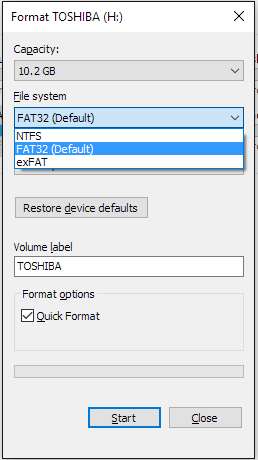

Once completed, your old FAT32 drive will be converted to NTFS. The file system conversion process should not take very long and the on-screen details are fairly intuitive. You will, of course, replace the drive letter with the letter of the drive you’re converting (c, d, or whatever that might be). Open a command prompt window by typing Command prompt in the Windows search box. When your Mac restarts, you will find all of your attached NTFS drives showing up in Finder on your Mac. Restart your Mac to bring changes into effect on your system. On the left, right-click on the chosen USB drive and format it with MS-DOS (FAT).
CHANGE USB TO NTFS ON MAC INSTALL
Of course, this assumes that you’ve put the NTFS-3G program in its default install path. sudo / usr / local / bin / ntfs-3g / dev / disk1s1 / Volumes / NTFS -olocal -oallowother. Now that this directory exists, you can use NTFS-3G to mount. Put USB drive into your Mac system and launch Disk Utility. First, create a directory to which you can mount the NTFS drive: sudo mkdir / Volumes / NTFS.
CHANGE USB TO NTFS ON MAC SOFTWARE
Convert FAT32 to NTFSīefore starting the process, ensure you have a few Gigs of free space as the conversion does require some space. Head over to the official Paragon Software website and download and install the software on your Mac. Method 5: Use Disk Utility to Create USB on Mac. On the plus side, there are many advantages of going to NTFS above and beyond the 4GB file size limit such as – auto-recovery of disk errors, larger drive size support, and security. The solution? Follow my quick How-To below to convert your FAT32 File System to NTFS.īecause it’s possible to experience data corruption and loss when converting a drive from FAT32 to NTFS, I recommend that you either back up the drive beforehand OR, copy the data off the drive, and perform a standard format selecting NTFS as your file system.


 0 kommentar(er)
0 kommentar(er)
